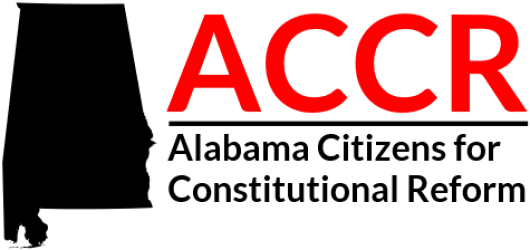By Valerie Strauss
March 10, 2017
Alabama has been in the news of late, what with Jeff Sessions, President Trump’s controversial attorney general, hailing from there, and the state’s Republican governor, Robert Bentley, in possible danger of impeachment after he was found to have had a sexually explicit conversation in 2016 with his then-chief adviser.
But there is something else to consider about Alabama that reflects on its history and the country’s current racial divide. It’s about the state constitution, which was written in 1901 and designed to limit local government and disenfranchise blacks. It has been amended more than 800 times since then and is the longest constitution in the country and possibly the world, at what the Council of State Governments says is 388,882 words.
Yet in the 116 years since it was written, and after all of the efforts to modernize the document — many of those efforts aimed at revising or eliminating racist language — these racist words still reside in the document:
SECTION 256
Duty of legislature to establish and maintain public school system; apportionment of public school fund; separate schools for white and colored children.
The legislature shall establish, organize, and maintain a liberal system of public schools throughout the state for the benefit of the children thereof between the ages of seven and twenty-one years. The public school fund shall be apportioned to the several counties in proportion to the number of school children of school age therein, and shall be so apportioned to the schools in the districts or townships in the counties as to provide, as nearly as practicable, school terms of equal duration in such school districts or townships. Separate schools shall be provided for white and colored children, and no child of either race shall be permitted to attend a school of the other race.
Of course, legal racial school segregation was banned throughout the United States by the Supreme Court in the 1954 Brown v. Board of Education decision, and federal law trumps state law.
But the language is still there, and a ballot initiative in 2012 to eliminate it, called the Alabama Segregation Reference Ban Amendment, or Amendment 4, was defeated by voters who worried less about the language, which is now symbolic given federal law, and more about what they believed would be new language that could reduce funding for public education.
In 2012, NPR reported about the surprising opponents of the amendment, who included the state’s teachers union and black political caucus, called the Alabama Democratic Conference.
“It’s a hoax on the people of Alabama. It’s a wolf with sheep’s clothes on,” says conference Chairman Joe Reed. “I mean, who’s worried anymore about some racist language in the constitution? That’s symbolic. It doesn’t mean anything now.”
…The problem with the amendment, Reed says, is that it would reinstate language added just after Brown v. Board of Education that was later struck down by the courts. That language, added as Amendment 111, declares “nothing in this constitution shall be construed as creating or recognizing any right to education or training at public expense.” At the time, it was intended to supersede the Alabama Constitution’s original guarantee that the “legislature shall establish, organize and maintain a liberal system of public schools.”
Now, opponents fear that passage of Amendment 4 will free the Legislature to slash funding to public schools as the state faces budget shortfalls.
A ballot referendum in 2004 to get rid of the racist language from the Jim Crow era lost by just a few thousand votes.
Barrett Holmes Pitner wrote this in this Daily Beast piece about the Alabama constitution in 2015:
“To put it mildly, Alabama’s constitution is an absurd document…. Alabama’s constitution places the majority the state’s political power in the hands of a small coterie of officials, leaving counties and municipalities forced to essentially ask permission from the legislature regarding almost any form of self-governing. Alabamans for a long time have railed against the inefficiencies and ridiculousness of this constitution. But the racial undertones and the fact that it disproportionately harms and disenfranchises persons of color should not be overlooked. In fact, it should be the focal point when attempting to understand the constitution that governs Alabama.
Some people in Alabama say that because the language has no legal force, it doesn’t really matter. But words have meaning — even if they are only symbolic and not legally enforceable — especially at a time when public schools are more segregated than at any time since the 1960s and school choice policies favored by President Trump and Education Secretary Betsy DeVos have been found to increase school segregation.
Key members of the Trump administration, including the president himself and DeVos, have displayed how little they know about African American history; the education secretary said last week that historically black colleges and universities were “real pioneers when it comes to school choice,” displaying no understanding that these schools were created because blacks were not allowed to attend white institutions.
For 116 years, the people of Alabama have left that language in their state constitution. Words matter.
Valerie Strauss is an education writer who authors The Answer Sheet blog. She came to The Washington Post as an assistant foreign editor for Asia in 1987 and weekend foreign desk editor after working for Reuters as national security editor and a military/foreign affairs reporter on Capitol Hill. She also previously worked at UPI and the LA Times. Follow
